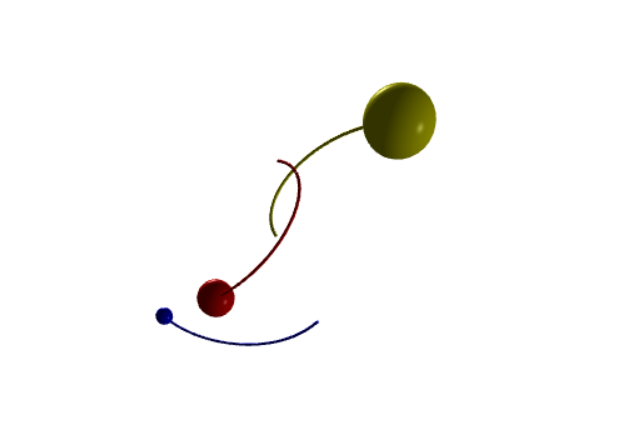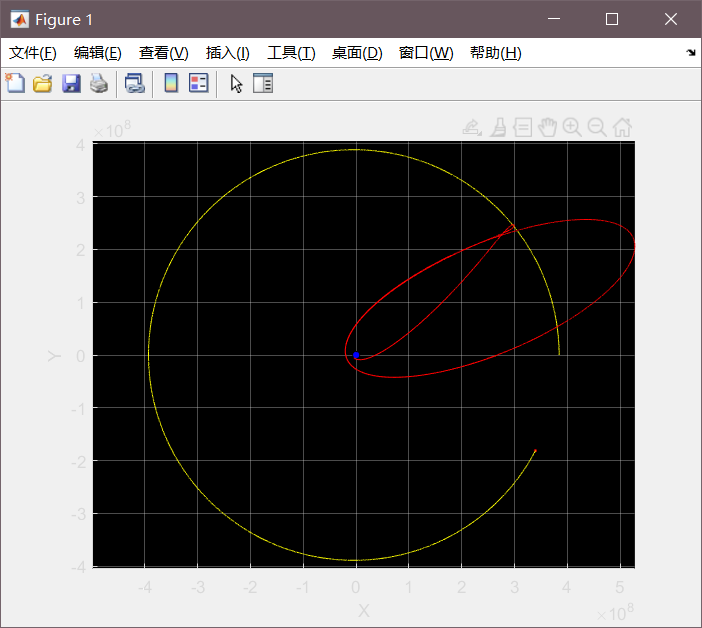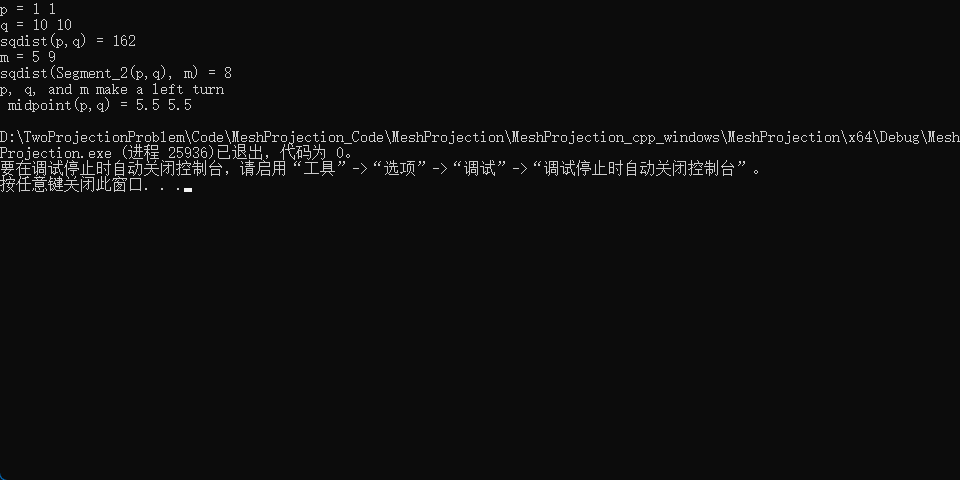原文来自本人博客:三体模拟器(python)
vpython
vpython库是一个能做3D动画的第三方库,安装起来很容易,利用anacanda或者pycharm都能简单安装
导入vpython
from vpython import *
设置画布参数
scene.forward = vector(0, -0.5, 1) # 视角角度
scene.width = 1280 # 宽
scene.height = 720 # 高
scene.background = color.white # 背景颜色
定义物理参数
G = 6.672e-11 # 万有引力常数
# 某个物体的参数
body1 = sphere(pos=vector(2e11, 0, 2e11), radius=2e10, color=color.red,make_trail=True, interval=10, retain=50) # 位置、半径、颜色。。。
body1.mass = 4.001e30 # 质量
body1.p = vector(0, 2e4, 0) * body1.mass # 动量
物理帧间隔
这里利用微元思想,设置一个物理帧间隔参数,并假定在这一小段时间内,力的作用效果不变
dt = 1e4 # 物理帧间隔
动量定理
利用动量定理,得到天体位置的变化
body1.p = body1.p + F1 * dt - F3 * dt # 动量定理
body2.p = body2.p - F1 * dt - F2 * dt
body3.p = body3.p + F2 * dt + F3 * dtbody1.pos = body1.pos + (body1.p / body1.mass) * dt
body2.pos = body2.pos + (body2.p / body2.mass) * dt
body3.pos = body3.pos + (body3.p / body3.mass) * dt
完整代码示例
from vpython import *scene.forward = vector(0, -0.5, 1)
scene.width = 1280
scene.height = 720
scene.background = color.whiteG = 6.672e-11 # 万有引力常数body1 = sphere(pos=vector(2e11, 0, 2e11), radius=2e10, color=color.red,make_trail=True, interval=10, retain=50)
body1.mass = 4.001e30 # 质量
body1.p = vector(0, 2e4, 0) * body1.mass # 动量body2 = sphere(pos=vector(-1.3e11, (3 ** 0.5) * 1e11, 0), radius=1e10, color=color.blue,make_trail=True, interval=10, retain=50)
body2.mass = 2e30
body2.p = vector(-(3 ** 0.5) * 1e4, -1e4, -0.4e4) * body2.massbody3 = sphere(pos=vector(-1e11, 3e11, -1e11), radius=3e10, color=color.yellow,make_trail=True, interval=10, retain=50)
body3.mass = 6e30
body3.p = -body1.p - body2.p # 保证整体动量为0,防止球飞到屏外dt = 1e4 # 物理帧间隔while True:rate(1000)r1 = body2.pos - body1.posF1 = G * body1.mass * body2.mass * r1.hat / mag2(r1) # 万有引力定律r2 = body2.pos - body3.posF2 = G * body2.mass * body3.mass * r2.hat / mag2(r2)r3 = body1.pos - body3.posF3 = G * body1.mass * body3.mass * r3.hat / mag2(r3)body1.p = body1.p + F1 * dt - F3 * dt # 动量定理body2.p = body2.p - F1 * dt - F2 * dtbody3.p = body3.p + F2 * dt + F3 * dtbody1.pos = body1.pos + (body1.p / body1.mass) * dtbody2.pos = body2.pos + (body2.p / body2.mass) * dtbody3.pos = body3.pos + (body3.p / body3.mass) * dt




















